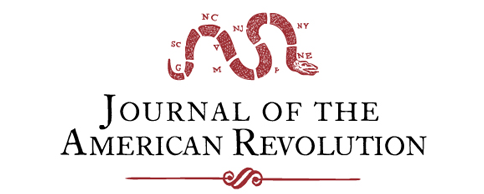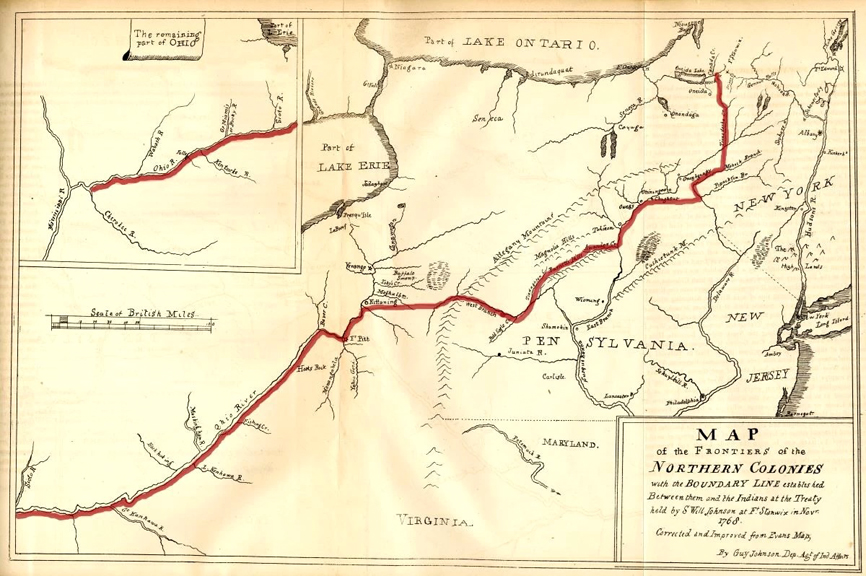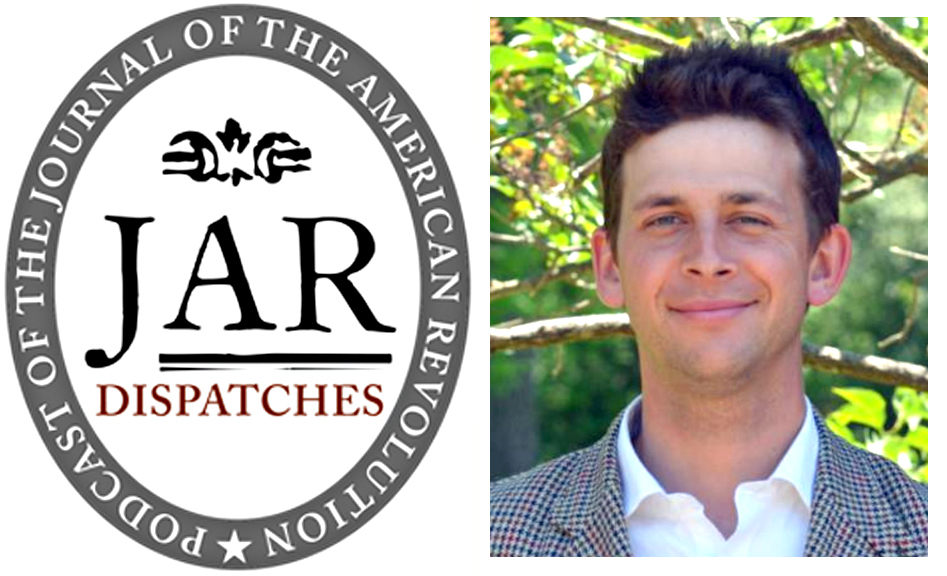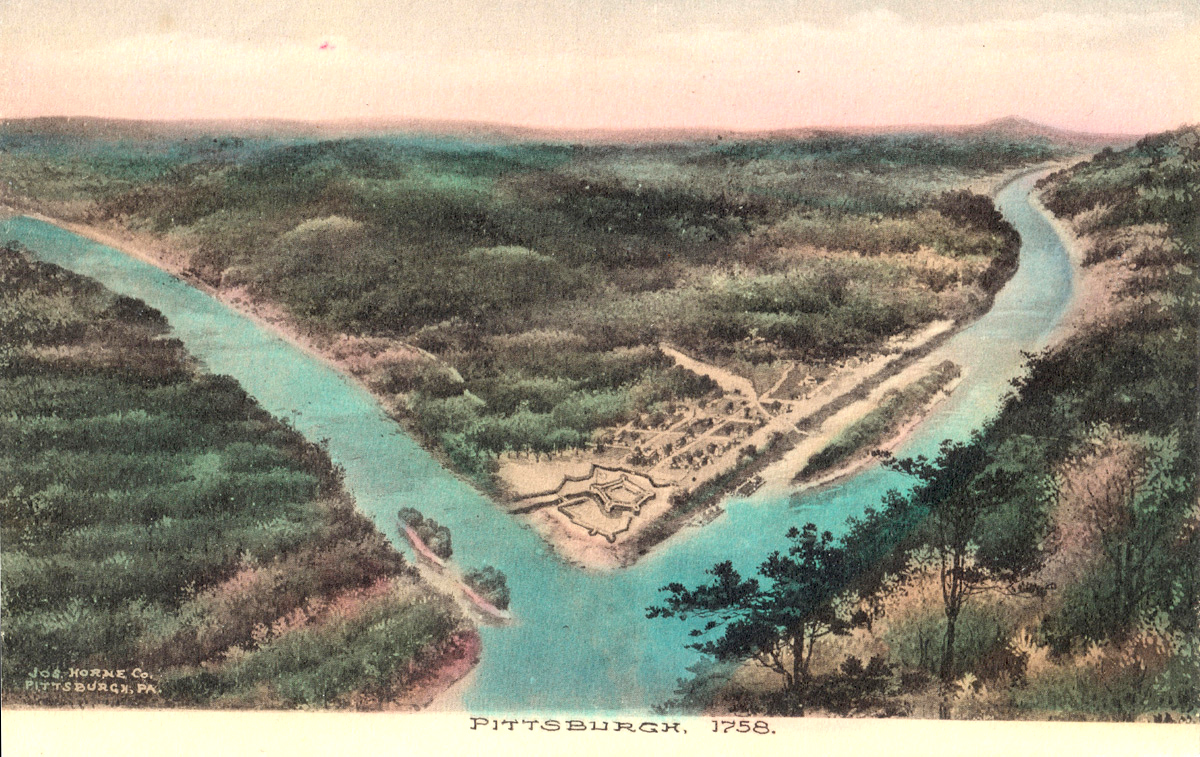An unbiased observer would likely conclude that the record of George Washington’s generalship in purely military terms was a mixed bag. The intent of what follows—a highly subjective exercise, to be sure—is not to reassess the overall quality of his generalship or weigh wins against losses. It is merely to give credit where credit is due, especially to someone who, objectively, was not equipped by military experience to lead a continental fighting force when he assumed command of the insurgent army in 1775. He was not familiar with artillery or cavalry, had never led a large army in open-field combat, and had less professional military experience than Charles Lee or Horatio Gates, the veteran British officers who had signed onto the Patriot cause. Congress apparently accorded first priority to political considerations in selecting an individual to lead their army whom they knew and trusted less as a soldier than as a legislator (from time spent as a member of the Virginia House of Burgesses and Congress itself), albeit one who knew more about military matters then they did.[1] And, of course, his Southern connection stood him in good stead with the delegates.
In terms of his wartime leadership, Washington set an example for two later generals who also ascended to the presidency. Ulysses S. Grant emulated Washington in demonstrating a strength of will and refusal to give up in his role as a military commander, regardless of setbacks on the battlefield.[2] And Dwight Eisenhower opined that the art of leadership is making the right decisions and then getting other men to want to carry them out.[3] Washington clearly did his share of that. While perhaps not a brilliant strategist and allowing that he exhibited a litany of tactical flaws conducing to multiple defeats in the conflict’s early stages (Long Island, Kip’s Bay, Fort Washington, Brandywine, and Germantown), the rebel leader did have his moments of conspicuous resolve that bred success throughout the struggle. The following are Washington’s top ten decisions contributing to the eventual victory of his cherished “glorious cause” of American independence.[4] They are listed chronologically.
1. Washington’s orders of November 16, 1775 to Col. Henry Knox to retrieve nearly sixty cannon from Fort Ticonderoga. Their placement on Dorchester Heights, overlooking British-occupied Boston, gained Washington his first victory by forcing the British to evacuate the city in March 1776. (The fact that the British had been planning to evacuate for some time does not negate the quality of decision-making.) The insurgent leader deserves ample credit for discerning the twenty-five-year-old Knox’s ability to carry out such a complicated and dangerous mission—a journey of three hundred miles that took forty days—in the dead of winter over challenging terrain that included rolling hills, winding rivers, lakes, and seldom-used roads. By endorsing Knox’s proposal to fetch the cannon, the commander in chief overruled objections from some in his circle who believed this would be an exercise in futility.[5] Without benefit of formal military training, Knox, who had tutored himself in strategy, tactics, and gunnery, would become a skillful and innovative artillery commander.[6] His talents quickly became apparent to Washington, who assured his artillery maestro, when writing from Cambridge shortly after the British withdrawal, “Trusting in your zeal, diligence, and ability, I remain confident of every exertion in your power for the public service.”[7]
2. The evacuation of Washington’s army from Brooklyn Heights to Manhattan on the night of August 29-30, 1776. Done in small craft on difficult water without detection by a larger and more powerful enemy army and fleet, this represents one of the most skillful withdrawals in military history. By the time he called a council of war on the afternoon of August 29 to discuss whether to withdraw from Brooklyn, Washington had already begun to collect the boats, and he ordered the evacuation to begin immediately.[8] The crossing began to unfold that evening. At that point, British officer Charles Stedman recalled, the American army “had been driven to the corner of an island, where they were hemmed in within the narrow space of two square miles” and “lay almost entirely at the will of the English.”[9] While not undoing Washington’s litany of errors in connection with the Battle of Long Island two days before, this operation saved fully one-half of his army—9,500 men, their horses, and most of their equipment. Washington, who salvaged all but five of his cannon, left with the last of the troops.[10] This action has been described by one historian as flawless and one of the greatest moments in the annals of warfare, given its impact.[11] To another, it stands as one of the most brilliant tactical withdrawals in military history.[12] And Lt. Benjamin Tallmadge, who did not “recollect a more fortunate retreat” in “the history of warfare,” opined that “Gen. Washington has never received the credit which was due to him for this wise and most fortunate measure.”[13]
3. The legendary crossing of the Delaware River on December 25-26, 1776 and defeat of the German brigade in Trenton. This marked Washington’s first significant battlefield victory of the war and launched the “Ten Crucial Days” campaign that dramatically altered the course of the contest just when it appeared the American army was on the verge of final defeat. As the Continentals’ commander in chief and his senior officers planned their assault, he reasoned that striking the enemy was justified by “necessity, dire necessity.”[14] The extent of Washington’s audacity was encapsulated by the reaction of the senior British officer in New Jersey: “I did not think that all the rebels in America would have taken that brigade prisoners.”[15] English historian Sir George Otto Trevelyan famously wrote, “It may be doubted whether so small a number of men ever employed so short a period of time with greater and more lasting effects upon the history of the world.”[16] And Lord George Germain, Britain’s secretary of state for North America and principal war strategist, succinctly articulated the importance of this event in his remarks to parliament in 1779: “all our hopes were blasted by that unhappy affair at Trenton.”[17] Perhaps Washington said it best when the battle ended: “This is a glorious day for our country.”[18]
4. Washington’s deployment of American troops along the Princeton-Trenton Road on New Year’s Eve 1777. This proved to be absolutely brilliant due to the leadership of Col. Edward Hand, who took command when Brig. Gen. Matthias Alexis Roche de Fermoy inexplicably abandoned his post. Their delaying action against the Anglo-German force of Maj. Gen. Charles, Earl Cornwallis during its march to Trenton on January 2—outnumbered though Hand’s one-thousand-man contingent was by more than six-to-one—plausibly forestalled the destruction of Washington’s army at Assunpink Creek and facilitated one of the most remarkable military maneuvers in history (see number 5).[19] That second battle of Trenton has been described as “the make-or-break moment” of the war.[20] To Lt. Samuel Shaw, this “was the most critical moment our bleeding country ever beheld,” when “the fate of this extensive continent seemed suspended by a single thread.”[21] Another officer posited that “the dispositions [Washington] adopted to harass and retard the advance of the enemy were the most sagacious his situation admitted; and the zealous, active, courageous agents of his will on January 2, 1777 should be distinguished by grateful recollections and the public favor.”[22] Hand’s men held off the enemy long enough that it was too dark for them to launch a full-scale assault when they arrived in Trenton, and the resulting standoff at Assunpink Creek segued into the rebels’ overnight march to Princeton, where they successfully attacked Cornwallis’s rearguard the next day.
5. The end run by Washington’s army around Lord Cornwallis’s left flank from Trenton to Princeton on the night of January 2-3, 1777. This daring move rescued his troops from perilous circumstances—possible entrapment between Assunpink Creek and the Delaware River—and led to the final victory of their winter offensive at Princeton. In the words of Maj. James Wilkinson, Washington “extricated himself from this desperate situation by converting his fault into a ‘ruse de guerre,’ which dismayed and disheartened the enemy and suddenly deprived them of all their acquisitions [in New Jersey] south of Brunswick.”[23] Maj. Gen. William Heath exulted that “General Washington retired to the other side of the [Assunpink] Creek, and as soon as it was dark,” ordered “a great number of fires to be lit up to deceive the enemy, stole a march and at nine o’clock next morning attacked three regiments of the enemy who were posted at Princeton [and] routed them.” And according to army surgeon James Thacher, “On this memorable occasion, Lord Cornwallis was completely outgeneraled; while he was expecting to find the Continental Army at their lighted fires at Trenton, he was astonished and confounded to hear the firing occasioned by this same army beating up [his] quarters 12 miles in his rear.”[24] Lt. Samuel Shaw commended “a general who knew how to take advantages and by a masterly maneuver frustrated the designs of the enemy. This step, considered in its consequences, proved the salvation of the country.”[25]
6. Washington’s decision to order mass inoculation of the Continental Army against smallpox in February 1777. This dramatic gesture was not without controversy but arguably was indispensable to preserving the integrity of his army. It proved to be a stunning success, resulting in the army being almost free of smallpox within a year.[26] This, the first major public health initiative undertaken in America, may have been Washington’s most unheralded contribution to winning the war. According to at least one historian, it saved his army.[27] And in the judgment of one medical writer, it was “a factor of considerable importance” in winning the war.[28] In his instructions of February 6 to Dr. William Shippen, Jr., Director General of the Continental Army’s hospitals from 1777 to 1781, the general wrote, “Finding the smallpox to be spreading much and fearing that no precaution can prevent it from running through the whole of our army, I have determined that the troops shall be inoculated. This expedient may be attended with some inconveniences and some disadvantages, but yet I trust in its consequences will have the most happy effects.” Washington saw no alternative: “Necessity not only authorizes but seems to require the measure, for should the disorder infect the army in the natural way and rage with its usual virulence, we should have more to dread from it than from the sword of the enemy.”[29]
7. Washington’s dispatch on August 16, 1777 of Col. Daniel Morgan’s riflemen to reinforce the northern American Army under Maj. Gen. Horatio Gates. Opposing British Maj. Gen. John Burgoyne’s expeditionary force, the spirits of Gates’s troops were considerably boosted, and so was their combat effectiveness.[30] Burgoyne’s surrender at Saratoga on October 17 propelled France into the war on America’s side and turned the conflict into a global struggle. With few exceptions, historians judge the Saratoga campaign to be the most decisive of the war.[31] At Freeman’s Farm on September 19, Morgan’s s veteran light infantry, comprising several hundred Pennsylvania and Virginia sharpshooters, trained their weaponry on British officers and knocked many out of the fighting early, demoralizing their rank-and-file.[32] According to one Continental officer, the colonel “astonished the English and Germans with the deadly fire of his rifles.”[33] At Bemis Heights on October 7, one of his marksmen may have mortally wounded Brig. Gen. Simon Fraser, “the best officer under Burgoyne,” who was attempting to rally his men. British officer William Digby remarked, “when General Burgoyne saw him fall, he seemed then to feel in the highest degree our disagreeable situation.”[34] Gates referred to Morgan’s crack shots as “the corps the army of General Burgoyne are most afraid of.”[35] Washington fully embraced his responsibilities as commander in chief by sending vital help to the Northern Department while also commanding his own troops in defense of Philadelphia.[36]
8. Naming Baron von Steuben as inspector general of the army in early 1778. The European officer’s training of the troops at Valley Forge translated into the enhanced discipline and operational efficiency that made them a more professional fighting force. The charismatic Prussian proved to be an outstanding drill inspector and a major factor in strengthening the army that emerged from the Valley Forge encampment.[37] Von Steuben introduced a new attitude toward discipline and a new degree of economy, which began to take effect almost immediately and continued to improve, even with setbacks, until the war ended.[38] When writing to his father Henry—president of Congress—in May 1778, Lt. Col. John Laurens, an aide-de-camp to Washington, observed that the brigade maneuvers, artillery salutes, and running musket fire he witnessed in camp were “executed to perfection,” and noted “the visible progress which the troops have already made under [von Steuben’s] discipline.”[39] In March 1779, Congress officially adopted the protocol set forth in von Steuben’s drill manual, Regulations for the Oder and Discipline of the Troops of the United States. And at war’s end, Washington imparted to him “in the strongest terms my entire approbation of your conduct, and … my sense of the obligations the public is under to you, for your faithful and meritorious services.”[40] It is said he purposely waited to write his last letter as commander in chief to the baron.[41]
9. Appointing Gen. Nathanael Greene to command the Southern Department of the Continental Army on October 14, 1780. Greene’s army, with the vital assistance of area militia, would ultimately drive the British from the interior of the Carolinas and Georgia, pinning them inside their coastal sanctuaries of Charlestown and Savannah. The Rhode Islander compiled a record of achievement that has been described as breathtaking, for the British—who believed Georgia and South Carolina were subjugated when the summer of 1780 ended—were now confined to those coastal enclaves.[42] John Adams, writing soon after the Yorktown victory, opined that Greene’s claimed triumph at Eutaw Springs “is quite as glorious for the American arms as the capture of Cornwallis.”[43] Congress awarded Greene a gold medal for the Eutaw Springs action.[44] Henry Knox claimed his friend had “performed wonders” without “an army, without means, without anything.”[45] And Dr. Benjamin Rush, writing to Greene from Philadelphia, spoke of “the praise given to you and your little army for your exertions and suffering in the common cause,” while “the South Carolina refugees in this city drink your health every day with a pleasure that discovers that they view you as one of their deliverers from the tyranny of Britain.”[46]
10. The maneuvers orchestrated by Washington in the late summer of 1781 to deceive Gen. Henry Clinton into expecting a Franco-American assault on New York City. —By casting a figurative smokescreen over the allied troop movement south to trap Cornwallis’s army at Yorktown, Virginia, Washington precluded Clinton’s timely intervention, leading to the climactic victory of the war. Washington went to great lengths: pitching a small city of tents on the west bank of the Hudson River, arranging for wagons to move conspicuously in and out of this fictional camp, and having American boats ply nearby waters and lay down pontoons. Meanwhile, rebel troops marched through New Jersey towards Trenton and joined up with their French counterparts at Princeton. Washington split his army into multiple columns and brought them forward at staggered intervals, the soldiers not knowing where they were headed until they reached Trenton.[47] The march south began on August 19, but it was not until September 2, when Washington and the Comte de Rochambeau were in Philadelphia with their armies close behind, that Clinton fully realized their intentions.[48] “Thus by threatening us with a siege,” one of his officers wrote, “the enemy have been suffered to come within sight of our posts, to retire thence again, to pass the Hudson, and to advance a good way into Jersey, without molestation or obstruction; while the army in Virginia … is now entirely unprepared for being attacked by a fleet and an army.”[49]
Final Thoughts
Washington’s success as a commander was notwithstanding a litany of persistent challenges: shortages of soldiers, shoes, blankets, equipment, food, and gunpowder; selfish, apathetic state governments; congressional bureaucratic ineptitude; and an adversary featuring the most able professional military minds Britain could employ.[50] In the aggregate, they posed a formidable obstacle to the insurgent enterprise. Add to these the unforced errors made by Washington and other Revolutionary generals along the way; these, of course, would matter far less than the final result, as Henry Knox told him: “Success in military matters procures applause and covers every defect in planning or executing an enterprise.”[51] The question of whether Washington was indispensable to the Patriot quest may be debated forever, but one thing can be said with certainty: if he was not, nobody was. And the belief among many at the time that he was indispensable loomed large in his public persona and the confidence of those soldiers and civilians who followed him. Caesar Rodney, Delaware’s most prominent Revolutionary figure and a signer of the Declaration of Independence, undoubtedly spoke for many when, following the rebel victory at Princeton, he wrote, “While Washington survives, the great American cause cannot die.”[52]
[1] Don Higginbotham, George Washington and the American Military Tradition (The University of Georgia Press, 1985), 43.
[2] James M. McPherson, Drawn with the Sword: Reflections on the American Civil War (Oxford University Press, 1996), 162.
[3] Stephen E. Ambrose, Eisenhower: Soldier and President (Simon and Schuster, 1990), 82.
[4] George Washington’s Address to Congress, June 16, 1775, in George Washington, This Glorious Struggle: George Washington’s Revolutionary War Letters (University of Virginia Press, 2007), ed. Edward G. Lengel, 4.
[5] Mark Puls, Henry Knox: Visionary General of the American Revolution (St. Martin’s Griffin, 2008), 34.
[6] Ibid., 251-254.
[7] George Washington to Henry Knox, April 3, 1776. Founders Online, National Archives, founders.archives.gov/documents/Washington/03-04-02-0022.
[8] David Hackett Fischer, Washington’s Crossing (Oxford University Press, 2004), 100.
[9] Charles Stedman, The History of the Origin, Progress, and Termination of the American War (P. Wogan, P. Byrne, J. Moore, and W. Jones, 1794), 1:222-224.
[10] John J. Gallagher, The Battle of Brooklyn, 1776 (Da Capo Press, 1995), 154.
[11] Barnet Schecter, The Battle for New York: The City at the Heart of the American Revolution (Walker & Company, 2002), 166.
[12] Joseph J. Ellis, Revolutionary Summer: The Birth of American Independence (Alfred A. Knopf, 2013), 122.
[13] Benjamin Tallmadge, Memoir of Colonel Benjamin Tallmadge. ed. Henry Phelps Johnston (The Society of Sons of the Revolution in the State of New York, 1904), 11-14.
[14] Washington to Joseph Reed, December 23, 1776. Founders Online, National Archives, founders.archives.gov/documents/Washington/03-07-02-0329.
[15] James Grant to Carl von Donop, December 27, 1776, in William S. Stryker, The Battles of Trenton and Princeton (Houghton, Mifflin and Company, 1898), 400.
[16] George Trevelyan, The American Revolution (Longmans, Green, and Co., 1903), part 2, 2:122-123.
[17] Remarks by George Germain, May 3, 1779, in The Parliamentary Register: Or History of the Proceedings and Debates of the House of Commons during the Fifth Session of the Fourteenth Parliament of Great Britain (John Stockdale, 1802), 11:392.
[18] James Wilkinson, Memoirs of My Own Times (Abraham Small, 1816. Reprint: Sagwan Press, 2015), 1:131.
[19] David Price, “Edward Hand’s American Journey,” Journal of the American Revolution (May 12, 2022), allthingsliberty.com/2022/05/edward-hands-american-journey/.
[20] Nathaniel Philbrick, Valiant Ambition: George Washington, Benedict Arnold, and the Fate of the American Revolution (Viking, 2016), 82.
[21] Josiah Quincy, The Journals of Major Samuel Shaw (William Crosby and H.P. Nichols, 1847), 32.
[22] Wilkinson, Memoirs of My Own Times, 1:139.
[23] Ibid., 1:132-133.
[24] James Thacher, A Military Journal During the American Revolutionary War, from 1775 to 1783 (Richardson and Lord, 1823), 86-87.
[25] Quincy, The Journals of Major Samuel Shaw, 32.
[26] Caroline Cox, A Proper Sense of Honor: Service and Sacrifice in George Washington’s Army (The University of North Carolina Press, 2004), 155.
[27] Michael Stephenson, Patriot Battles: How the War of Independence Was Fought (Harper Perennial, 2007), 175.
[28] F. Fenner, D.A. Henderson, I. Arita, Z. Jezek, and I.D. Ladnyi, Smallpox and Its Eradication (World Health Organization, 1988), 240.
[29] Washington to William Shippen, February 6, 1777. Founders Online, National Archives, founders.archives.gov/documents/Washington/03-08-02-0281.
[30] Kevin J. Weddle, The Compleat Victory: Saratoga and the American Revolution (Oxford University Press, 2021), 260, 262.
[31] John R. Maass, From Trenton to Yorktown: Turning Points of the Revolutionary War (Osprey Publishing, 2025), 106.
[32] Theodore P. Savas and J. David Dameron, A Guide to the Battles of the American Revolution (Savas Beatie, 2013), 127.
[33] Recollections of Captain E. Wakefield of the American Army, in Henry Steele Commager and Richard B. Morris, eds., The Spirit of ‘Seventy-Six: The Story of the American Revolution As Told by Participants (Harper & Row, Publishers, 1967), 581.
[34] Journal of William Digby, October 7-8, 1777, in John Rhodehamel, ed., The American Revolution: Writings from the War of Independence, 1775-1783 (The Library of America, 2001), 327, 329.
[35] Horatio Gates to Washington, October 5, 1777. Founders Online, National Archives, founders.archives.gov/documents/Washington/03-11-02-0418.
[36] Weddle, The Compleat Victory, 389.
[37] Washington, This Glorious Struggle, 151; James Kirby Martin and Mark Edward Lender, “A Respectable Army”: The Military Origins of the Republic, 1763-1789 (Wiley Blackwell, 2015), 113; Stephenson, Patriot Battles, 286; Maass, From Trenton to Yorktown, 140.
[38] Charles Royster, A Revolutionary People at War: The Continental Army and American Character, 1775-1783 (The University of North Carolina Press, 1979), 213-214.
[39] John Laurens to Henry Laurens, May 7, 1778, in Rhodehamel, ed., The American Revolution, 414.
[40] Washington to Baron von Steuben, December 23, 1783. Founders Online, National Archives, founders.archives.gov/documents/Washington/99-01-02-12226.
[41] Royster, A Revolutionary People at War, 214.
[42] John Ferling, Almost a Miracle: The American Victory in the War of Independence (Oxford University Press, 2007), 520.
[43] John Adams to John Jay, November 28, 1781, in The Works of John Adams, ed. Charles Francis Adams (Little, Brown and Company, 1852), 7:487.
[44] The Continental Congress authorized medals to be struck in honor of the following battles or campaigns: the Siege of Boston in 1776, Saratoga in 1777, Stony Point in 1779, Paulus Hook in 1779, Cowpens in 1781, and Eutaw Springs. Instead of a medal, Congress directed that a marble obelisk be erected to recognize the victory at Yorktown.
[45] Theodore Thayer, Nathanael Greene: Strategist of the American Revolution (Twayne Publishers, 1960), 381.
[46] Benjamin Rush to Nathanael Greene, September 4, 1781, in The Papers of General Nathanael Greene, ed. Dennis M. Conrad, 9:323.
[47] Ron Chernow, Washington: A Life (The Penguin Press, 2010), 407-408.
[48] Nathaniel Philbrick, In the Hurricane’s Eye: The Genius of George Washington and the Victory at Yorktown (Viking, 2018), 169.
[49] Frederick Mackenzie, Diary of Frederick Mackenzie (Harvard University Press, 1930), 2:606.
[50] Chernow, Washington: A Life, 457-458.
[51] Knox to Washington, April 23, 1778. Founders Online, National Archives, founders.archives.gov/documents/Washington/03-14-02-0545.
[52] Caesar Rodney to William Killen, January 27, 1777, in Caesar Rodney, Letters to and from Caesar Rodney, 1756-1784, ed. George Herbert Ryden (Historical Society of Delaware, 1933), 172.








11 Comments
Nicely done.
David, this is a solid list and it’s hard to quibble with any of the choices, but since the topic was “Decisions” rather than performances, I would challenge #2 (evacuation from Brooklyn Heights). The decision to evacuate is an obvious one––what alternative did he have? It’s the performance (mixed with the serendipity of weather conditions) that made this legendary. Also #4 (deployment of troops on the Trenton-Princeton Road) is another decision every commanding general would order; it’s Colonel Hand’s daylong performance that made this work. After all, de Forney was Washington’s decision to head the operation.
My replacement choice for one of those two would be Washington’s decision to attack Howe’s advanced force at Germantown. The limited endpoint––Philadelphia was not GW’s objective––signified that the surprise assault was designed for a broader impact. Indeed, it succeeded despite the tactical defeat. Based on the preponderance of contemporary evidence, it infused confidence and elan in the Americans and instilled a grudging respect into the Crown forces for the capabilities of their opponent. It may have partially affected General William Howe who submitted his resignation less than three weeks later––one week before he learned of Burgoyne’s surrender. The Battle of Germantown also swayed the French toward formal negotiations with Franklin et al. John Adams was surprised to learn when he was in Paris the following July that although “the attempt was unsuccessful, the military gentlemen in Europe considered it as the most decisive proof that America would finally succeed.” Washington may have not planned for that final benefit; regardless, his decision to attack made this all possible.
Thank you for that very thoughtful input, Gary. Your points are well taken, but the decision in each case obviously gave rise to the performance. Re the LI evacuation (and unfortunately I was limited by the length of the article so I didn’t get into this), GW did more than just make the decision. He ordered the boats to be made available beforehand, ordered the evacuation to begin immediately (where any delay would have been fatal, I think), and actively supervised the operation in person throughout, leaving on the last boat, according to at least one account. At Assunpink Creek, he made the decision to fight a defensive action in anticipation of Cornwallis’s advance on Trenton, which entailed placing his main body behind the creek and dispatching the advance guard under Fermoy to delay the enemy. I believe this was all part of a well-conceived plan to elude his adversary and perform an end run around Cornwallis’s left flank up to Princeton, and then — he hoped — up to Brunswick. I don’t buy the notion that the decision to do that sprang spontaneously from the council of war at the Douglass House on the night of Jan. 2, 1777. (Yes, Hand’s leadership offset Fermoy’s abdication of duty; that’s why I dedicated “The Road to Assunpink Creek” to him and his men.) Bottom line: on this occasion, GW carried out “a model of a brilliantly managed defensive battle” (to quote D. H. Fischer). Re Germantown, it may have helped persuade the French to formally ally with the Patriot cause, but I believe its impact would have been incremental, coming on top of Saratoga. I think both conduced to that development, but I have to assume the victory over Burgoyne would have loomed larger in Vergenne’s consideration than the defeat at Germantown. Anyway, this is all useful stuff to think about, so thx again! I really appreciate the feedback.
David, Thank you for a very interesting and informative counting. One of the fun things about such listings is their ability to start a debate, such as Gary’s Germantown response. My offering would be Washington’s choice of Morristown and the Watchung Mountains as his military capital for essentially the entire war. That presence had both long lasting strategic and tactical implications.
David, Great piece. Will you write on Washington’s worst decisions next?
I think Mr. Price has done a splendid job of compiling this list. It’s a great starting point for discussion. I agree with Gary E’s points. Having been at Germantown on October 5th of this year for the 248th commemoration of the battle, I think Gary’s comments are spot on. I was able to really study the battle in detail and discuss it with multiple reenactors. I was also able to dig in to some primary sources from both sides. It without a doubt, from multiple Colonial participants, buoyed their spirits. They now realized that they could fight the British on equal terms. The battle was”lost” in that the British still held the area. One poor decision by Washington and bad luck by the weather conspired from them completely winning the day. When the Colonials came up against a mighty stone house where about 100 British soldiers had barricaded themselves in, Washington was very indecisive as what to do. It was suggested to bomb the house and attack it instead of simply going around it and pressing the attack on the retreating British. Washington gave the order to do so. It cost 150 Colonials their lives, including 7 outstanding junior officers at one window. Washington should have bypassed it and left a guarding force surrounding the house. They lost the men and the initiative. The bad luck was an incredibly dense fog that many said was the worst they had seen (or not actually seen, so to speak). There were friendly fires incidents and great disorientation on the right wing of the attack. Multiple British soldiers and commanders were surprised at the ferocity of the Colonials. They gained newfound respect for Washington’s Army. Remember that this happened several weeks after the rout at Brandywine and the “Massacre at Paoli.”
Thank you for such an interesting article.
Gary, thank you very much or your insightful comments – appreciate the feedback, and would offer the following thoughts in response. I would say that the decisions led to the performance – couldn’t have one w/o the other. I didn’t cover this in the article b/c of limitations on its length but in the case of the LI evacuation, I think GW deserves credit, not only for the decision (and some among his officers thought this maneuver would be an exercise in futility b/c of the East River’s width and the presence of British warships), but also for his efforts to supervise the operation from start to finish, monitoring the movement of troops to the very end, and (according to at least one account) leaving in the last boat. Re the events of January 2, 1777, I would not assume that every general would have made the decision to fight a defensive action as GW did. I think he deserves credit for conceiving and waging a “brilliantly managed defensive battle” (as Fischer puts it). The delaying action was part, I would contend, of his scheme to elude the enemy and advance to Princeton, and then to Brunswick (the latter being his real objective); I think the decision to make the overnight march did not spring spontaneously from the council of war at the Douglass House that evening but was rather part of a well-conceived plan on GW’s part. And, yes, Fermoy was obviously a disaster as an officer (in this instance and at Fort Ti the following July), and it was most fortunate for the Patriot cause that Col. Hand was there to take charge during the delaying action. (That’s why I dedicated “The Road to Assunpink Creek” to Hand and his men, b/c I think they may very well have saved GW’s army from destruction that day.) Re Germantown, I think – from Vergenne’s perspective and others in the court of Louis XVI – it added to the impression created by Saratoga that conduced to formal French intervention, but I believe intuition suggests that a victory over Burgoyne would have carried more weight w/ official France than a defeat at Germantown, however spirited the performance of American troops on the latter occasion. Again, thank you for reading the article and sharing your thoughts!
To John’s question, I wasn’t planning to write a piece about GW’s worst decisions although it’s an intriguing idea. As Steve reminds us, the Chew House debacle would be right up there, and let’s not forget splitting his outnumbered army in two before the battle of Long Island and then (most egregious to me) inordinately delaying his evacuation of Manhattan Island in late Sept. and early Oct. ’76 as if he WANTED to be trapped on the island. He hardly distinguished himself at Brandywine Creek, although he did manage to avoid leading the army into a catastrophic defeat there. And he should have urged Congress to name Greene as Southern commander after the fall of Charleston, rather than refusing to weigh in on such congressional decisions, as was his practice, until after Gates was obliterated at Camden.
Any other nominations?
P.S. I apologize for my duplicative responses to Gary – should have been more patient after I submitted the first one.
As a follow-up to my last comment listing some of GW’s worst decisions, let me add his failure to listen to his better judgment and overrule Nathanael Greene’s misguided counsel on whether or not to evacuate Fort Washington in November 1776 — clearly Greene’s worst decision of the war (and fortunately one he never repeated).
David, I am pleased that you agree that the combination of Saratoga & Germantown was necessary to open the formal negotiations in the winter of 1777-78 that eventually led to the Treaty of Amity and Commerce. (It’s no coincidence that Vergennes’s biographer included both contests in the title of his chapter explaining the decision process leading to these discussions). But I never saw evidence to support your suggestion that Germantown “added to the impression created by Saratoga,” and that Saratoga “loomed larger” than Germantown in Vergennes’s consideration. My John Adams quote I provided earlier convinces me that he was convinced in 1778 by French military officials in Paris that even in defeat, Washington’s willingness to attack at Germantown provided them––as Adams wrote––“the most decisive proof” of America’s ultimate success. Adams’s opinion, perhaps derived from primary witnesses, runs contrary to the current, collective mindset that Saratoga was the prevailing (or even solely decisive) event leading to the French Alliance. He was there; we were not.
I don’t argue with any of the ten, but their is a decision made by GW that did as much as anything to secure the Revolution in the early days, namely the nomination of, and support given to, Benedict Arnold to take operational command of the Northern New York theater and delaying the advance south by a year. Guy Carleton would have been a much better prepared commander than Burgoyne, who literally had no idea what he was up against, let alone how to defeat it. Gates would have had a much tougher opponent in Carleton, but Valcour Island removed him from operational command of the northern British Army. Washington saw the man for the duty, the same way he saw Nathanael Green for the Southern Theater. And just like Greene in the South, who could have performed as well as Arnold in the North? Washington was a shrewd judge of character!